Luo People of Kenya
Are you looking for information about Luo People of Kenya - The Nilotes of Kenya - The Jaluo - this is a page for you.
The Luo, who occupy three districts bordering Lake Victoria, represents the Lake Nilotes.
The Luo are farmers (and fishermen of course) in circumstances that are far from easy.
Throughout the nineteenth century AD , the Luo migrated into the area they now occupy in Kenya.
They left lower savanna grasslands for higher and cooler regions with reliable rainfall.
As a result of this migration, their traditional emphasis on cattle was supplemented by farming and an increasing importance of crops in their economy.
Bantu agriculturalists, with whom the Luo increasingly interacted, exchanged many customs with them.
LOCATION OF THE LUO PEOPLE IN KENYA
According to the last national population census , the Luo number over 3 million people, or about 13 percent of Kenya's total population.
Along with the Luhya, the Luo are the second largest ethnic group in the country, behind the Gikuyu.
Most Luo live in western Kenya in Western province or in the adjacent Nyanza province, two of the eight provinces in Kenya. Some Luo live to the south of Kenya in Tanzania.
Many Luo also live in Nairobi. Most Luo maintain strong economic, cultural, and social links to western Kenya, which they consider home.
Over the past 500 years, the Luo have migrated slowly from the Sudan to their present location around the eastern shore of Lake Victoria.
This area changes from low, dry landscape around the lake to more lush, hilly areas to the east. The provincial capital of Kisumu is the third-largest city in Kenya and is a major cultural center for the Luo.
LUO IN AFRICA
The Luo of Ethiopia:
Ethiopia is located in Eastern Africa, west of Somalia, at between 8 00 N, 38 00 E coordinates. Ethiopia is about 1,127,127 sq km, with a population of 73,053,286. The Luo ethnic group in Ethiopia are about 45,646 of the total population. Its climate is classified as tropical monsoon with wide topographic-induced variation.
The Luo in Ethiopia are known as Anuak as well, and are in fact no any different than the Anuak of the Upper Nile in Sudan.
Moreover, the Luo Anuak in Ethiopia indeed are the continuation of the Anuak of the Upper Nile Region in Southern Sudan whom are the descendants of Gilo, the younger brother of Nikango and Dimo as far as the ancestry linkages are concerned (Ogot, Bathwell (1967).
The Anuak Luo of Ethiopia are found in the Gamella region of south western Ethiopia. They are classified as Nilo-Saharan, Eastern Sudanic, Nilotics, Luo and Anuak. They are numbering 45, 646 according to (1991) census (Gilley, Leoma: 2004).
Their main sources of economy are fishing, agriculture, mining and hunting. Their source of economy has a distinct link between with the other Luo groups in Southern Sudan and neighbouring countries (Ethiopia, Kenya, DRC, Uganda and Tanzania)
.The Luo of Kenya:
The Luo ethnic group in Kenya are part of the central arguments among the Luo groups all over Africa. Some Luo’s mythical and oral history in Sudan refer to Kenya as the home of origin before the migration Luo people to Sudan and other parts of Eastern Africa.
On the contrary, Luo in Kenya assume that Sudan is the central point of migration and their home of origin, the fact that has been proven by many ethnologists and historians to be the actual point of origin of the Luo people (Atieno-Odhiambo: 1999).
Most ethnologists and scholars who tried to study Luo ethnic groups in the 21 century have cited the same assumptions in which they refer to Southern Sudan as the home of Luo ethnic groups.
Furthermore, Kenya remained the most populated country with Luo ethnic groups in Africa. Kenya also appeared to be unique in the sense that Luo group has maintained its culture, Language and sustained the unity and prevented further separation and migration (Atieno-Odhiambo: 1999).
According to Adamson (1967), the migration of Luo ethnic group to Kenya started some hundred and fifty years ago. Adamson further stated that Luo are the only Nilotic groups in Kenya as far as Kenyan ethnic classification is concerned.
They have “… cross [ed] lake Victoria after pushing Bantu ethnic population and the first inhabitants of the Lake Victoria (1967: p157).
The Luo have chosen Nyanza province on the Banks of Lake Victoria as their home and settled there since. They (Luo) have migrated to Kenya from eastern Uganda in four waves which consisted of (1) The Joka-jok as the first group to arrive from the Acholiland, and the largest migration of the Luo recorded to Kenya (2) migration from Alur (3) The owiny whom are actually part of the Padhola and (4) the Jok’omolo who migrated from Pawir.
Currently, there are about 12 Luo clans found in Kenya, and consist of Jo-Alego, Jo-Gem (Gum), Jo-Ugenya, Jo-Seme, Jo-Karachuonyo, Jo-Nnyakach, Jo-Kabundo, Jo-Kisumo, Jo-Kano, Jo-Asembo, Jo-Uyoma, Jo-Sakwa and Jo-Kajulu. The term “Jo” in Luo language means people of” (Ogot: 1997).
Apparently, the Luo ethnic tribe are considered as the third largest group in Kenya (11%) after the non-Luo Bantu of Kikuyu (21%) and Luhya (14%) of the total population. (Ogot: 1997)
Nonetheless, the Luo language is adopted and spoken by majority of non-Luo tribes in Kenya as a second language. In 1994, the Luo ethnic group’s population was estimated to be 3, 185,000. The Luo in Kenya are also known as Nilotic Kavirondo, and classified as Nilo-Saharan, Eastern sudanic. The Luo however, simply refer to themselves as Jo- Luo, which literary means; (the people of Luo) (Ogot: 1997).
The Luo of Kenya are known as agriculturist, Fishers and miners. They have adopted Christianity as their traditional religion, and also believed in ancestors and life after death (Gray, Richard: 1961).
The Luo of Tanzania:
There are similarities noted between the Luo ethnic groups of Tanzania, and the Luo of Kenya. Both are being classified as Nilotic Kavirondo, Nilo-Saharan, Luo, and Eastern Sudanic.
Nonetheless, by paying a closer look at the Luo Settlement around the Lake Victoria (Re: Map figure) in Kenya, it gives a clear indication of continuation of the same Luo ethnic tribe of Kenya up to eastern bank of lake Victoria, crossing the border of Tanzania and Kenya. The Luo in Kenya are found in Mara Region (Ogot: 1997).
The population in Tanzania was estimated at 280,000 according to the year 2001 government census. The migration of the Luo ethnic to Tanzania is cited around 1800. The Luo ethnic group in Tanzania crossed over form Kenya, as such they are not any different than the Luo in Kenya. \
The Luo group in Tanzania are also known as Luo Kavirindo; the same name that applies to Luo groups in Kenya (Wild J.V. (1954).
The Luo of Uganda:
Uganda is home for Luo ethnic groups of (1) Acholi, (2) Adhola, and the assimilated Luo groups of (3) Lango and (4) Kumam.
It is also assumed to be the possible first entrance that Luos of Sudan used to further migrate to Kenya, Tanzania and the Democratic republic of Congo.
The Luo population in Uganda was estimated at 994,373, in which 746,796 according to (1991 census) were Luo acholi, that are found in North central Acholi district, and 12,089 speakers of Chopi, (1972 Ladeoged et al,).
This statistics also includes 247, 577 (1986) Luo Adhola in Maple District (Ogot: 1997).
Both Luo Acholi and Adhola are classified as Nilo-Saharan, Eastern Sudanic, Nilotics, Luo or Lwo. In addition to Acholi and Adhola in Uganda, there are also Alur, Jo-Nam, Thur, Lango and Kumam. In this context, it was noted that Lango and Kumam are not
Luo by their origin; rather, they have been assimilated through intermarriages and socio-cultural interaction. According to T.T. S. Hayley (1947) the Lango were in close contact with the Nilo-homitic such as Shilluk, Luo, Anuak, Alur and Jopaluo.
These groups seem to occupy the areas that passed round the north of Lake Rudolph and cross to the north of Lake Albert. The groups split up, and migrated northwest, and southwest to form what is known today as nilotic group of eastern Africa, as a result of inter ethnic conflict between an alliance of Bari and Madi against the Acholi. In this segment, Lango continued its migration to settle southwest towards the Nile about A.D. 1700. (1947:p37).
With this note, it is fair to say that, Lango ethnic groups are of closer linkage culturally; to the Luo Acholi group as far as Luo ethnology is concerned.
The Luo of Democratic Republic of Congo:
DR Congo, or The Democratic Republic of Congo is one of central African Countries that hosted large number of Luo ethnic tribe known as Alur.
The Luo Alur are about 750,000 in the democratic Republic of Congo (2001Johnston and Mandrake), and are found in Oriental Province, Mahagi Territory and Northwest to Djalasiga area. (Hayley: 1947)
The Luo Alur in Congo are also known as Lur, Aloro, Alua, Alulu, Luri, Dho Alur and Jo-Alur.
Furthermore, They are classified as Nilo-Saharan, Eastern Sudanic, Nilotics, Luo-Acholi, Alur-Acholi or Alur.
The Luo Alur in the Congo were the pioneers of African Music’s, which is adopted later by most African countries in the modern history. (Atkinson, Raymond: 1994).
The Luo Alur according to Peter George Murdock (1959) subsists primary by agriculture, the profession that many Luo groups’ masters. The Luo Alur inhabit northern Uganda, and extended into Belgian Congo and Kenya. (1959).
The ancestor of Alur groups according to Partitioned, Francis (1985), were part of the long term movement of the Luo speaking people from Southern Sudan to what is known now as Uganda and Kenya.
THE LUO CULTURE, HABITS, MIGRATION AND SETTLEMENT
Migration is the movement of people from one place to another in search for better opportunities and thus causing settlement, hunters and gatherers for instance are moving from one place to another in search of economic opportunity.
Migration therefore brought about exploration of the world were people moved freely looking for adventures, technology was spread due to moving from one place to another, culture was diffused and lost; people got new ideas, beliefs, and new crops and products spread from one place to another.
Movement and settlement brought was caused by ecological change, development of food production and conflict; the change of climate for instance in the Sahara desert made tremendous movement in search for better water catchment areas and better conducive environment for survival, food technology also made people to move from one place to another due to dense population, this bigger population might have brought about scarce recourses which brought about fighting.
The Luo ethnic group makes up around 25% of Kenya's population, making it the 3rd largest ethnic group after the Kikuyu and the Luhya. There are approximately 12 sub-groups within the tribe. They are a very large group, with their territory spreading beyond Kenya, into Tanzania, Sudan and Uganda.
The traditional occupation of the Luo is fishing, though many are also farmers or work jobs in the larger cities. Luo community, according to history emerged from the Southern part of Sudan. During the olden days, as history reads they were one community which included the Kalenjins who later came to be known as the highland Nilotes, and the Masai group who later came to be known as the plane Nilotes.
Luo community came to be known as the River-Lake Nilotes. The naming of these communities came about according to their prevailing activities during the times of migration. The Luo community, however, were the most unique. During this migration, they followed the river Nile and settled along Lake Victoria hence the name.
It is written in history that the river lake Nilotes probably originated at Wau in southern Sudan, near the confluence of the Meride and Sue Rivers. The Kenya Luo migrated into western Kenya via today's eastern Uganda, the first wave arriving sometime around 1500 AD. These arrivals came in at least five waves which is said to have been arriving at different times;
The Joka-Jok who migrated from Acholiland, were the first and largest migration who comprise the Jo-Karachuonyo, Jo-Kabondo, Jo-Nyakach, Jo-Kanyada, Jo-Kadem among others settled in the south part of Nyanza which is today in the location of Homabay District, Karachuonyo District, Rongo, areas of South Nyanza sugar company and Migori District.
Another group migrating from Alur joined the Joka-Jok. The Jo-K'Owiny who migrated from Padhola includes Jo-Sakwa, Jo-Uyoma, Jo-Seme, Jo-Asembo, Jo-Kajulu, Jo-Kisumo among others who settled in the Kisumu region and parts of the northern Nyanza. The Jok’Omolo are said to have come from Pawir and arrived later, they include the Jo-Alego, Jo-Ugenya, Jo-Gem, and Jo-Yimbo who settled in the northern side of Nyanza.
The Abasuba an heterogeneous group in southern Nyanza, with Bantu peoples from Buganda and Busoga were assimilated into groups such as JoKaksingri, Jo-Kaswanga, Jo-Gwassi, Jo-Kamasengre among others, settled around Suba district and Mbita.
The main Luo livelihood is fishing, farming and pastoral herding. It is said that they moved along river Nile in search for fish since it was one of their main food source and their population was increasing and the river would not sustain the growing population, they were forced to move from different direction, some moved to the east of Uganda like the Acholi, some moved to the west side of Kenya, others moved to Tanzania and Ethiopia.
As African communities they were encountered with diseases which forced them to move from their origin. ‘Jwok’ which means witchcraft also made some of the population to move since they believed witchcraft and ancestral believes and thus they could fear bad spirits and had to move because diseases indicated bad curse and bewitched from ‘Jwok’.
They termed Some of the tropical disease as ‘Chira’ which is a curse could force them to move since these was a bad indication of bad land and even though they moved with some of these diseases while migrating the medicine men had to look for an alternative to cure ‘Chira’ as they moved from one place to another they discovered some plants which were suitable for medicinal purposes and consumption.
Conflict among themselves and enemies also contributed to their migration, as man is a political animal and always want authority over the other; the Lou people were fighting one another for power, since resources are always inadequate the weaker once had to be forced to migrate to other places.
Conflict between outside enemies also brought about movement since there was unrest between their neighboring communities which forced them to move. Inadequate rainfall is one of the major causes of there migration; since they were rearing animals and the land was affected by little rain they had to move for greener pastures, ‘Kech’ refers to hunger forced them to look for other opportunities in other areas;
This indicates the desertification of Sahara; the desert was increasing and there was no food and water for there animals and this forced them to look for opportunities for there livestock since livestock was part of there wealth and they used these domestic animals for food, rituals and social transactions such as pledges incase unlawful behavior and paying brides wealth.
In the 19th and 20th century in the coming of the British the Luo came in to contact with the European which forced there movement to urban centers in the construction of the Kenya Uganda railway since the British were targeting the Nile river.
Early British contact with the Luo was indirect and sporadic. Relations intensified only when the completion of the Uganda Railway had confirmed British intentions and largely removed the need for local tribal alliances.
In 1896 a punitive expedition was mounted in support of the Wanga ruler Mumia in Ugenya against the Umira Kager clan led by Gero.
Over 200 were quickly killed by a Maxim gun. In 1899, C. W. Hobley led an expedition against Sakwa, Seme and Uyoma locations in which 2,500 cattle and about 10,000 sheep and goats were captured. By 1900, the Luo chief Odera was providing 1,500 porters for a British expedition against the Nandi.
In 1915, the Colonial Government sent Odera Akang’o, the ‘ruoth’ (the lord) of Gem, to Kampala, Uganda. He was impressed by the British settlement there and upon his return home he initiated a forced process of adopting western styles of "schooling, dress and hygiene".
This resulted in the rapid education of the Luo in the English language and English ways. The Luo generally were not dispossessed of their land by the British, avoiding the fate that befell the pastoral tribes inhabiting the Kenyan "White Highlands".
Many Luo played significant roles in the struggle for Kenyan independence, it made them move to Kenyan town since they were educated and had to look for opportunities,the lawyer C.M.G. Argwings-Kodhek, for example, used his expertise to defend Mau Mau suspects in court.
This indicates the luo moving to urban regions of Uganda and Kenya. Another example is when Kenya got independence in 12th December 1963, Oginga Odinga, a prominent Luo leader, declined the presidency of Kenya, preferring to assume the vice presidency with Jomo Kenyatta as the head of government.
Their administration represented the Kenya African National Union (KANU) party. However, differences with Jomo Kenyatta caused Oginga to defect from the party and abandon the vice presidency in 1966.
His departure caused the Luo to become politically marginalized under the Kenyatta and subsequently the Moi administrations.
The migration made the Luo to adopt to many conditions which has made them to be heterogeneous community, The Luo people and dialects of their language have historic roots across the Lake Victoria region.
Chief among the powerful families to which the Luo trace their ancestry were the Sahkarias of Kano, the Jaramogis of Ugenya, and the Owuors of Kisumu, whose clans married several wives and had multitudes of grandchildren and heirs to various chieftainships.
Leaders of these lineages typically had multiple wives and intermarried with their neighbors in Uganda and Sudan.
The Luo tribe, through intermarriages and wars, are part of the genetic admixture that includes all modern East African ethnic groups as well as members of the Buganda Kingdom, the Bunyoro Kingdom, the Toro Kingdom, and the Nubians of modern day Sudan.
They had many ethnic neighbors with whom they frequently inter-related, including the Nandi, Luhya, Kipsigis and the Kisii. As a result, treaties and intermarriages were accomplished, resulting in a mixture of inter-cultural ideals and practices. As is the case with all so-called tribes of modern day East Africa, Luo history is intricately interwoven with the histories of their neighbors, attesting to the complexity of East African pre-colonial history.
The interaction of the Bantus other Nilotes and mores so the British made them intermarry and change some of there believes and customs. The Bantus influence their language which led to the borrowing of words such as ‘Nyasae’ which refers to God; they borrowed this from the luhya.
Abasuba intermarried with the baganda and the Busoga during there migration which affected there language dialect, the Luo of the southern Nyanza and that of the northern have different dialect in there Luo speaking.
The British on the other hand made brought education and industrialization which changed the Luo Ethnic and cultural ideology and had to move from one place to another for instance in the buiding of the Kenya-Uganda railway, these movement brought a lot of interests such as social, political and economic interest and force the Luo to move to Urban centers were they participated.
The movement however has caused much positive and negative change as far as the social structure of the Luo is concerned.
Culture for instance has changed rapidly due to diffusion, invention, discovery, culture loss and acculturation were they acquired both material and non material culture and this has affected their social structure.
Time indicates that the Luo are heterogeneous group because they have intermarried, shared and borrowed culture from one society to another. The modern world therefore is said to erode the culture and beliefs which were and are still being practiced by the Luo.
Today there are two different spoken dialect among the Luo, the North Nyanza (JoSiaya, JoAlego, JoUgenya, JoSakwa) whose dialect is much influenced by the Bantus from the Western Kenya and Uganda ; The South Nyanza (JoKarachuonyo, JoKarungu, JoKamagambo) whose dialect is influenced by the Suba, Kisii and Kalenjin.
Urbanization for instance has attracted most of them especially the expert who have taken the modern education, example is the Kenyan government; they have been interested in leadership and politics since Kenya was colonized by the British, Jaramogi Odinga and Achieng Oneko in that matter have been playing a big role in Kenyan politics
LANGUAGE
The Luo, like other Kenyans, are typically conversant in at least three languages. The two national languages of Kenya are English and KiSwahili.
English, derived from the British colonial era before Kenya's independence in 1963, is the official language of government, international business, university instruction, banks, and commerce. It is taught throughout Kenya in primary and secondary schools. KiSwahili is the primary language of many coastal populations in Kenya and has spread from there throughout East Africa, including Luoland.
Today, the KiSwahili language serves as a language of trade and commerce in urban markets and rural towns.
Nowadays, KiSwahili is also taught in Kenyan primary and secondary schools. In addition, radio, television, and newspaper materials are available in these two languages.
Nevertheless, the indigenous language of the Luo, referred to as Dholuo, is for most people the language of preference in the home and in daily conversation.
Dholuo is taught in primary schools throughout Luoland. Most Luo young people are fluent in English, KiSwahili, and Dholuo. This is particularly impressive because these languages are from three very distinct language families with drastically different grammatical principles and vocabulary.
Children enjoy playing language games in Dholuo. Among these is a tongue-twister game. For example, children try to say without difficulty, Atud tond atonga, tond atonga chodi, which means, "I tie the rope of the basket, the rope of the basket breaks.
" Acham tap chotna malando chotna cham tapa malando means, "I eat from the red dish of my lover and my lover eats from my red dish."
Most Luo, irrespective of educational attainment and occupation, prefer to speak Dholuo at home and continue to teach this language to their children. Even young Luo teenagers, who nowadays live in Nairobi and rarely visit Luoland, nevertheless have learned to speak Dholuo fluently.
Children are given names that correspond to where they were born, the time of day, or the day of the week.
Even the kind of weather that prevailed at the time of a child's birth is noted. For example, one born during a rain storm is called Akoth (male) or Okoth (female). Just about every Luo also has a pet name used among close friends.
FOLKLORE
Stories, legends, riddles, and proverbs are an important part of Luo culture. They are traditionally recited in the siwindhe, which is the home of a (widowed) grandmother.
Luo boys and girls gather there in the evenings to be taught the traditions of their culture. In the evenings, after people have returned from their gardens, they gather to tell and listen to stories.
In the siwindhe, however, grandmothers preside over storytelling and verbal games. Riddles take the form of competitive exchanges where winners are rewarded by "marrying" girls in a kind of mock (pretend) marriage situation.
Friendly arguments often erupt over interpretations of riddles. One riddle, for example, asks the question, "My house has no door," which is answered by "an egg." Another riddle is, "What is a lake with reeds all around?" The answer is, "an eye."
Clever answers are frequently given as alternatives to these standard answers. Proverbs are another part of the siwindhe discussions and are common in everyday use as well.
Some examples are, "The eye you have treated will look at you contemptuously," "A hare is small but gives birth to twins," and "A cowardly hyena lives for many years."
Morality tales teach all listeners the proper way to cope with life's circumstances. Such questions as, Why do people die?, What is the value of a deformed child?,
What qualities make an appropriate spouse?, What is friendship?, Who is responsible for a bad child?, Why do some people suffer?, and many others are the subject of folklore.
For example, the story known as "Opondo's Children" is about a man called Opondo whose wife continuously gave birth to monitor lizards instead of human babies. These lizard babies were thrown away to die because they were hideous.
Once, however, the parents decided to keep such a child and he grew to adolescence. As a teenager, this child loved to bathe alone in a river. Before swimming he would take off his monitor skin, and while swimming he mysteriously became a normal human being.
His skin was, in fact, only a superficial covering. One day a passerby saw him swimming and told his parents that he was a normal human being. Secretly, his parents went to watch him swim and discovered that he was in fact normal.
They destroyed his skin and thereafter, the boy became accepted and loved by all in his community. For this reason, Opondo and his wife deeply regretted that they had thrown away all of their many monitor children. This tale teaches that compassion should be displayed toward children with physical defects.
In an origin tale concerning death, it is told that humans and chameleons are responsible for this calamity. Were (God) wanted to put an end to death, which strikes "young and old, boys and girls, men and women, strangers and kinsmen, and the wise and the foolish." He requested that an offering be made to him of white fat from a goat.
A chameleon was assigned to carry the offering up to the sky where Were lives. Along the way, the fat became dirty and was angrily rejected by Were.
He declared that death would continue because of this insult. The chameleon became cursed by the Luo, and ever since it must always walk on all fours and take slow steps.
RELIGION
Christianity has had a major impact on Luo religious beliefs and practices. Today, religious communities draw on beliefs both from indigenous practices and from Christianity. The Anglican Church, known as the CPK, and the Roman Catholic Church are very significant among the Luo.
Many people, however, do not draw sharp distinctions between religious practices with European origins and those with African origins. Mainstream churches draw on a rich Luo musical and dance tradition.
For many Christians, the ancestors continue to play a significant role in their lives. In traditional belief, the ancestors reside in the sky or underground, from where they may be reincarnated in human or animal form.
Ceremonies are sometimes performed when naming a baby to determine if a particular spirit has been reincarnated. The spirits of ancestors are believed to communicate with the living in their dreams.
In the Luo religion, troublesome spirits may cause misfortunes if they are not remembered or respected. Luo refer to spirits by the term juok, or "shadow." The Luo refer to God by many names that indicate his power. For example, Were means "one certain to grant requests"; Nyasaye, "he who is begged"; Ruoth, "the king"; Jachwech, "the molder"; Wuon koth, "the rain-giver"; and Nyakalaga, "the one who flows everywhere." Prayers and requests are addressed to God by those in need of his assistance.
Christianity has fused most notably with traditional religious beliefs and customs in "independent Christian churches," which have attracted large followings.
For example, the Nomiya Luo Church, which started in 1912, was the first independent church in Kenya. The founder of this church, Johanwa Owalo, is believed to be a prophet similar to Jesus Christ and Muhammad. Owalo later teamed up with a Catholic priest and began teaching a new theology that rejected both the Pope and the doctrine of the trinity.
MAJOR HOLIDAYS OF THE LUO PEOPLE IN KENYA
The Luo recognize the national holidays of Kenza and Tanzania, depending on the country where they reside. In addition, Luo celebrate the Christian religious holidays.
RITES OF PASSAGE AMONG THE LUO PEOPLE IN KENYA
People are discouraged from noting when someone is pregnant for fear that problems might result from jealous ancestors or neighbors. Older women and midwives assist the woman throughout her pregnancy and in childbirth.
The birth of twins, which is believed to be the result of evil spirits, is treated with special attention and requires taboos (prohibitions) on the part of the parents.
Only if neighbors engage in obscene dancing and use foul language will the burden of giving birth to twins be lifted. The Luo, however, did not adopt circumcision for men, as practiced in some neighboring Bantu groups.
Adolescence is a time of preparation for marriage and family life. Traditionally, girls obtained tattoos on their backs and had their ears pierced. Girls spent time in peer groups where conversation centered on boys and their personal attributes.
Sex education was in the hands of older women who gave advice in a communal sleeping hut used by teenage girls. Lovers sometimes made secret arrangements to meet near these huts, although premarital pregnancy was strictly forbidden.
Nowadays, neighborhood and boarding schools have replaced communal sleeping huts and elders, although sex education is not taught in these schools.
Since there are no initiation ceremonies in earlier stages of the life cycle, the funeral serves as the most important symbol for family and community identity. Burials must take place in Luoland, regardless of where a person may have lived during his or her adult years.
RELATIONSHIPS
Social relations among the Luo are governed by rules of kinship, gender, and age. Descent is patrilineal (traced through the male line) to determine kinship.
Kin align themselves for purposes of exchange of goods, marriage, and political alliance. Names are received through the male line, and after marriage women reside in the homesteads of their husbands.
A married woman builds up alliances for her husband's family by maintaining strong relationships with her brothers and sisters who live at her birthplace or elsewhere.
It is expected that after marriage a woman will bear children for her husband's lineage. Bride wealth, given by her husband and his family, contributes to the woman's ability to maintain ties with her own family throughout her life.
By having children, a woman greatly enhances her power and influence within the lineage of her husband. As the children grow, they take special care of her interests.
Perhaps as many as 30 percent of Luo homesteads are polygynous (in which a man has more than one wife). This contributes to solidarity between a mother and her children, and between children born of the same mother.
Polygyny is commonly accepted by both men and women, provided traditional ideas and regulations are maintained. These include, for example, a special recognition for the first wife or "great wife," whose house and granary are located prominently at the back of the homestead opposite the main gate.
Subsequent wives have homes alternatively to her right and left in the order of their marriage. Sons are provided with homes adjacent to the main gate of the compound in the order of their birth. The husband maintains a homestead for himself near the center of the compound.
His own brothers, if they have not yet formed their own homesteads, reside on the edge of the compound near its center.
As Luo become wealthy in Luoland or elsewhere, it is common for them to build a large house for their mother. This is especially necessary if she is a "great wife," as it is considered improper for younger wives to have larger homes than wives more senior to themselves.
Visiting and being visited is the major source of pleasure for the Luo. The social principles regarding age, kinship, and gender impose a heavy schedule of ritual obligations on Luo, regardless of their place of residence.
Attendance at funerals is a significant obligation for all Luo. At funerals, Luo consume large amounts of meat, beer, and soft drinks and socialize with friends and relatives. Funerals last for four days for a male and three days for a female.
After the burial and expression of grief through speeches and viewing of the body, there is a period of feasting and celebration. After the funeral of a man, a rooster (which symbolizes masculinity to the Luo) is taken from his house and eaten by his relatives.
This signifies the end of his homestead. (When a new homestead is founded, a man is given a rooster from his father's home.)
Visitors for funerals gather from far and wide and are housed around the compound of the dead person, which is where he or she will be buried. This location and the duration of the ritual is an excellent opportunity for young people to meet and observe members of the opposite sex, or for elders to discuss marriage alliances that they might wish to promote. Dating may well follow initial meetings or deliberations at the funeral.
LIVING CONDITIONS
There are several types of rural houses. A common house is made of mud and wattle (woven twigs) walls with a thatched roof. Another style includes mud and wattle walls, with a roof made of corrugated metal.
A more elaborate, permanent house has brick walls and a roof covered with iron sheets or tiles. Bricks, iron sheets, and tiles are all items of prestige, and their ownership symbolizes success in farming, animal husbandry, or some modern occupation such as teaching, the ministry, or shopkeeping.
Homes vary in shape as well as size. Some homes of the old variety made of wattle and mud are circular. Those with more permanent materials tend to be rectangular.
A prosperous man who is the head of a large extended family may have several wives whose homes are situated by their rank within a large circular homestead.
Luo living in Kisumu, the regional capital, or in Nairobi have homes that vary according to their social status.
Some Luo are numbered among the elite Kenyans whose homes are elaborate, with facilities for automobiles, sleeping accommodations for visiting relatives, and servants' quarters.
Other less fortunate Luo live in Nairobi's crowded slums where homes are quite temporary, made of wattle and mud and short-lived materials such as tin, paper, and plastic.
Malaria is a major killer in Luoland. Children's diseases, such as kwashiorkor (a form of protein malnutrition), are a threat in those families without access to a balanced diet or knowledge about nutrition and health standards.
In villages, there is an emphasis on preventive medicine; most rural communities have clinics with medical workers who emphasize sanitation, prenatal care, nutrition, and other practices known to reduce the risk of disease.
FAMILY LIFE
Marriage was traditionally considered to be the most significant event in the lives of both men and women. It was thought inappropriate for anyone to remain unmarried. Large families ensured adequate numbers of workers. The system of polygyny (multiple wives) guaranteed that all people married.
The significance of bride wealth is increasing, even among educated Luo. Members of the groom's family initiate a process of negotiation with the bride's family that may unfold over many years.
Negotiations can be intense, and for this reason a "go-between," who is neutral to the interests of each family, is used. Luo believe that divorce cannot occur after bride wealth has been exchanged and children are born.
Even if separation happens, the couple is still ideally considered to be married. Failure to have children, however, is thought to be the fault of the bride and, for this, she will be divorced or replaced by another wife. Cattle are the primary item given in bride wealth.
In determining the value of a prospective bride, her family takes into account her health, appearance, and, nowadays, her level of formal education. Failure of men to raise a high bride wealth prompts many of them to propose elopement, a practice that is on the rise today.
Young people in Kenya still tend to marry within their own ethnic groups. Tribal elders frequently caution against "intertribal marriages."
The more distant the ethnic group in space and customs from the Luo, the greater the cautionary warnings. For this reason, Luo intertribal marriage is most likely to occur with members from neighboring Baluya societies, which are Bantu. However, most Luo marry within their own ethnic group.
CLOTHING
Traditionally, the Luo wore minimal clothing. Animal hides were used to cover private parts, but there was no stigma (shame) associated with nudity. Nowadays, clothing styles are largely Western in origin. They vary according to a person's social class and lifestyle preference.
It is not uncommon to see people in remote rural areas fashionably dressed according to some of the latest tastes.
Luo living in Nairobi tend to wear clothing that is cosmopolitan by rural standards and similar to the clothing worn in New York or Paris.
In rural areas, most people dress according to their work routines. For example, women wear loose-fitting dresses made of solid or printed cotton fabric while farming or attending market. Wearing sandals or going barefoot are typical while working.
Men wear jeans as work pants while farming. During the rainy season, the roads can become very muddy; consequently, boots and umbrellas are especially prized by both men and women.
These days, there is a strong market in second-hand clothing, making slacks, dresses, coats, undergarments, sweaters, shoes, handbags, belts, and other items available to even poorer families.
Luo enjoy dressing up for funerals and weddings and are considered throughout Kenya to be very fashionable.
FOOD
The primary crops are maize (corn), millet, and sorghum. Coffee, tobacco, cotton, and sugarcane are important cash crops. Important animals include sheep, goats, chickens, and cattle, which are used for bride wealth.
Fish from Lake Victoria and its streams are important, especially talapia. Many foods are purchased, including sugar, bread, and butter, which are consumed with tea on a daily basis, a custom known as "tea time" and derived from the British colonial era, which ended in 1963.
The staple food eaten several times a day is ugali. This is made from maize meal stirred in boiling water until it becomes a thick and smooth porridge.
Ugali is always eaten with an accompaniment such as meat or stew. Greens (sukumawiki) are also frequently eaten with ugali. Maize, popular throughout Kenya, is frequently sold for money.
This has led many families to sell their maize when financially pressed for money. For this reason, there is a periodic famine throughout Luoland that occurs every year during the long, dry season prior to harvest.
EDUCATION
Kenya introduced a new system of education in the 1980s known as the "8-4-4 system," modeled after the American system. Luo now go to primary school for eight years, to secondary school for four years, and to college for four years. The previous system was modeled on the British educational system.
After completing high school, Luo attend technical, secretarial, nursing, computer, teacher training, and business schools as alternatives to the university.
There is a new university at Maseno near Kisumu, which provides easy access for those Luo who want to attend a university. Education is highly valued among the Luo, and they are well represented in the professions.
Nevertheless, there still remains a high level of illiteracy (inability to read and write), especially among females.
In polygynous marriages there is a strong tendency for younger wives to be more educated than their older counterparts. More Luo are now recognizing the importance of sending girls to school.
The Luo success in academic pursuits may well be related to the value given to "wisdom" in their culture. Modern philosophers have applied the term "sage philosophy" to describe individuals among the Luo who, in the past and present, excel in teachings and reflections on the human condition. The Luo society is an open one.
All individuals are encouraged to express themselves publicly. Truth (adier) is expressed through songs and folklore by respected elder men and women who are acknowledged as wise.
Most respected, however, is the japaro, a term that translates into English as "thinker," who is consulted on all matters of interest to community welfare.
The most famous sage until his death in the mid-1990s was Oginga Odinga, a widely respected elder and former vice-president of Kenya.
He spoke out publicly during colonialism and in post-colonial politics against what he considered to be injustices. In his writings, he emphasized communal welfare and concern for preservation of traditional values
CULTURAL HERITAGE
.The Luo consider their entire traditional way of life to be an important community resource. There is a great deal of disagreement over what should be preserved and what should change. Customs centering on marriage and gender relations are hotly debated.
Songs are popular today as in the past. Musicians praise and lament political, generational, economic, and cultural contradictions in contemporary life. Luo devote much time to listening to music, and regularly purchase records, tapes, and CDs. Christian church music is also a form of entertainment.
It is said that the short story was a well-developed art among the Luo in traditional times. Such stories were often accompanied by music.
The most important short-story writer in Kenya today is a Luo woman, Grace Ogot. In her stories she includes traditional themes as well as modern dilemmas, such as an educated woman living in a polygynous arrangement. Some of her best-known stories are
"The Other Woman," "The Fisherman," and "The Honorable Minister."
EMPLOYMENT
The most notable fact about the Luo economy is that women play the primary role in farming. Before the introduction of the modern money economy, the garden was the centerpiece of the women's world of work. Industrious women could earn considerable wealth by exchanging their garden produce for animals, handicrafts, pots, and baskets.
A young girl is expected to help her mother and her mother's co-wives in farming land owned by her father, brothers, and paternal uncles. Even though a girl may go to school and rise to a prominent position in society, there is often still a strong association with the land and digging.
Men are preoccupied with livestock and spend a great deal of time in "social labor" concerned with placing their cattle in good contexts, such as bride wealth exchanges, trading partnerships, and commercial sales. In the modern economy, cattle and goats have a monetary value as well. Men have control over animals and cash crops.
SPORTS
The Luo participate in all of the major national sports currently played in Kenya. Soccer is a particularly popular sport.
Secondary schools provide an assortment of sports for young people, giving them an opportunity to engage in competitive games such as track and field and soccer. Children enjoy games in the village, such as racing, wrestling, and soccer. Some boys enjoy swimming.
RECREATION
Childhood play activities for girls include grinding soil on a flattened stone in imitation of adults who grind grains. Girls play with dolls made from clay or maize (corn) cobs.
Boys and girls play hide-and-seek and house. Girls play a game called kora using pieces of broken pottery or stones. In this game, stones are collected and then thrown into the air. The main purpose is to catch more than one stone on the back of the hand.
Boys and girls between six and ten years of age play separately. Girls spend more time at home caring for younger siblings and helping with household duties and gardening. Boys have more freedom and combine play activities with herding and care of animals.
Children and adults both play a game called bao, a board game played widely throughout Africa. This game of strategy involves trying to place seeds on the opponent's side of the board and capture their seeds.
Radio and television are both available to most Luo. Radio programs are in KiSwahili, English, and Dholuo. Virtually all homes have radios, which are a significant source of both entertainment and education.
Books and printed media have now largely replaced public speaking as a form of entertainment. Nevertheless, visiting family and friends continues to be a valued aspect of Luo culture. Visits are typically very lively with lots of animated discussion. The verbally skillful person is still widely admired.
Birthday parties are now much more important than they were in the past, when individuals did not reckon their age in years.
Parents try to make their children's birthdays special with a cake, cards, and gifts. Weddings and funerals, as in the past, are still major forms of entertainment for old and young alike. Church groups, clubs, women's organizations, and schools are important organizations for their members' social calendars.
CRAFTS AND HOBBIES OF THE LUO PEOPLE IN KENYA
See the article on "Kenyans" in this chapter for information about crafts and hobbies.
SOCIAL PROBLEMS
During the colonial era and since independence, the Luo have been isolated from national leadership even though they are the second-largest ethnic group in the country.
Specific social problems follow from this isolation. Economic development in western Kenya is poor, Luo roads are badly in need of repair, rates of human immunodeficiency virus (HIV) infection are comparatively high, food shortages are frequent, and infant mortality is among the highest in the country.
The municipal water supply is so badly treated that residents suffer from water-borne diseases such as typhoid fever, amoebic dysentery, common dysentery, and diarrhea.
Tourism has bypassed Luoland and Lake Victoria, even though Lake Victoria has hippopotami, freshwater fish, and cultural attractions.
Teenage pregnancies are a major social problem in contemporary Luoland. Social responsibility for teenage pregnancy falls entirely on girls, who generally leave school if they become pregnant.
Other Pages of Interest
Kenya Cultural Origins |
Kenya Student Rules |
Kikuyu People |
Luo in Kenya |
Masai People |
Samburu People |
Student Class Rules |
Turkana People in Kenya |
Recent Articles
-
Garam Masala Appetizers ,How to Make Garam Masala,Kenya Cuisines
Sep 21, 14 03:38 PM
Garam Masala Appetizers are originally Indian food but of recent, many Kenyans use it. Therefore, on this site, we will guide you on how to make it easily. -
The Details of the Baruuli-Banyara People and their Culture in Uganda
Sep 03, 14 12:32 AM
The Baruuli-Banyala are a people of Central Uganda who generally live near the Nile River-Lake Kyoga basin. -
Guide to Nubi People and their Culture in Kenya and Uganda
Sep 03, 14 12:24 AM
The Nubians consist of seven non-Arab Muslim tribes which originated in the Nubia region, an area between Aswan in southern
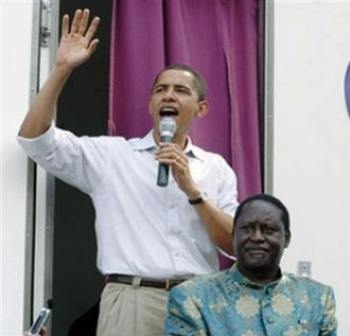
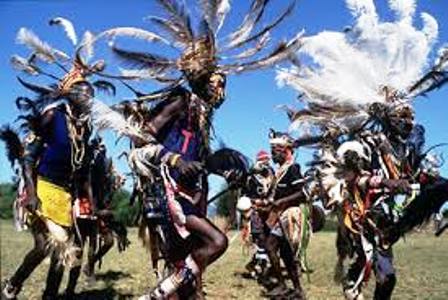
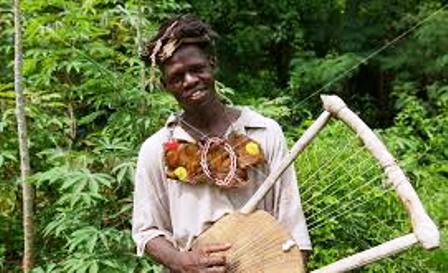
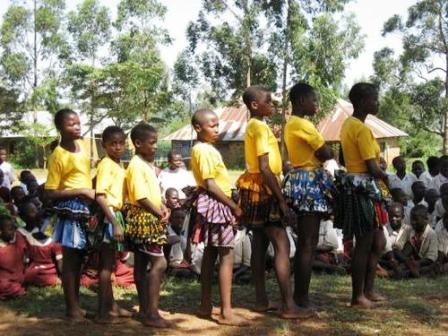
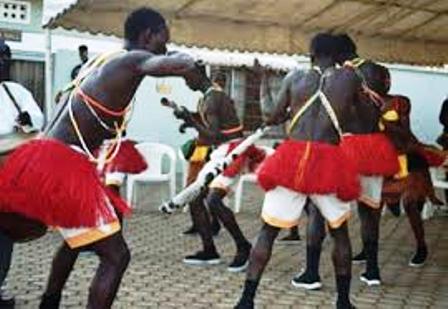
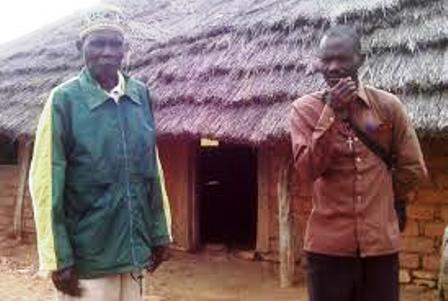
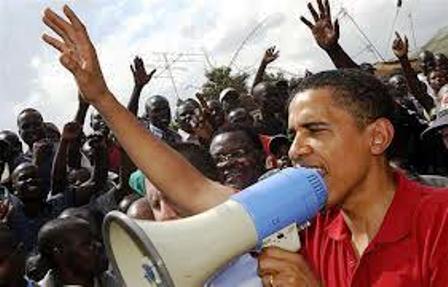
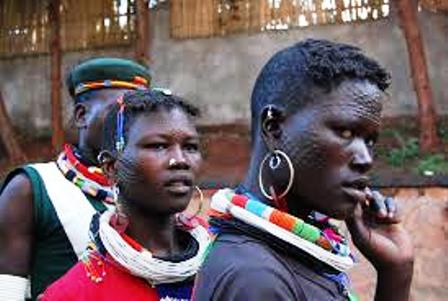
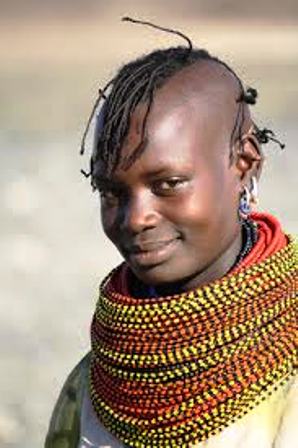
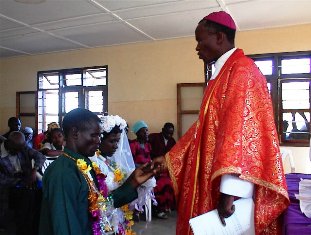
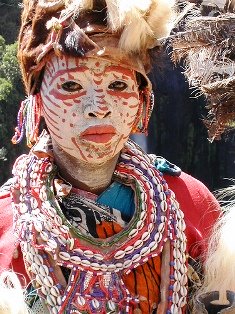
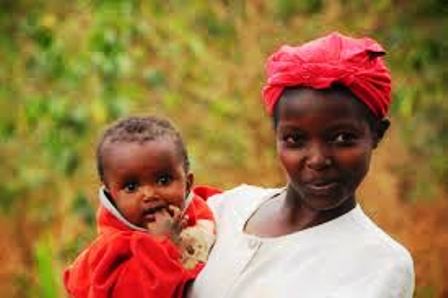
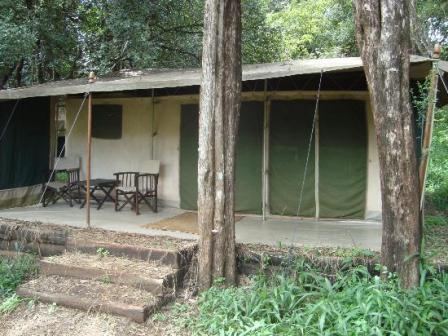
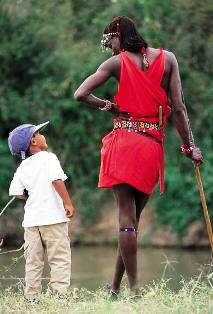
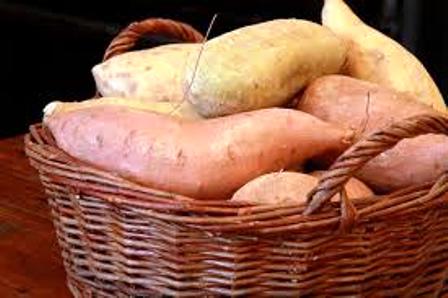
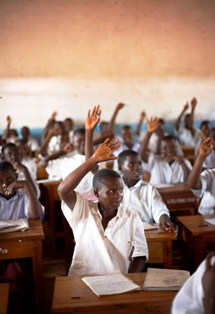
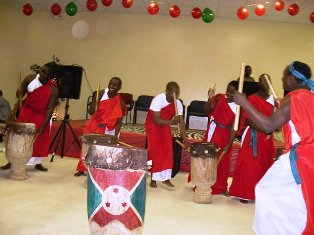
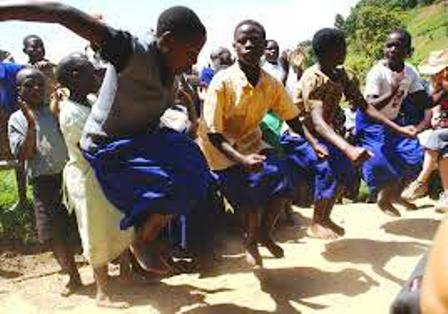
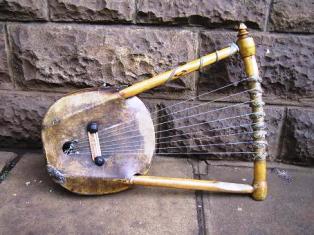
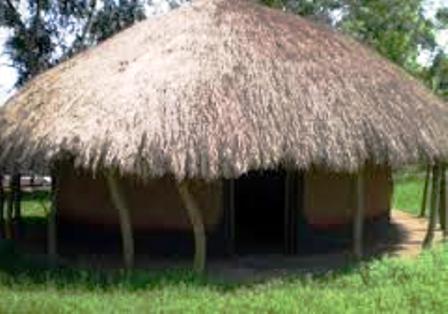
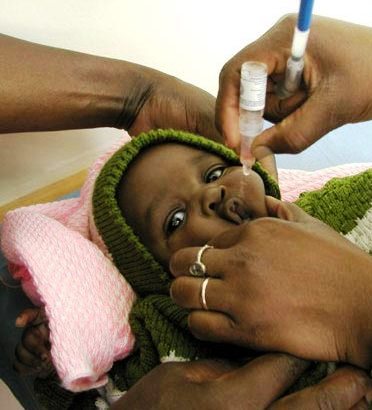







New! Comments
Have your say about what you just read! Leave me a comment in the box below.